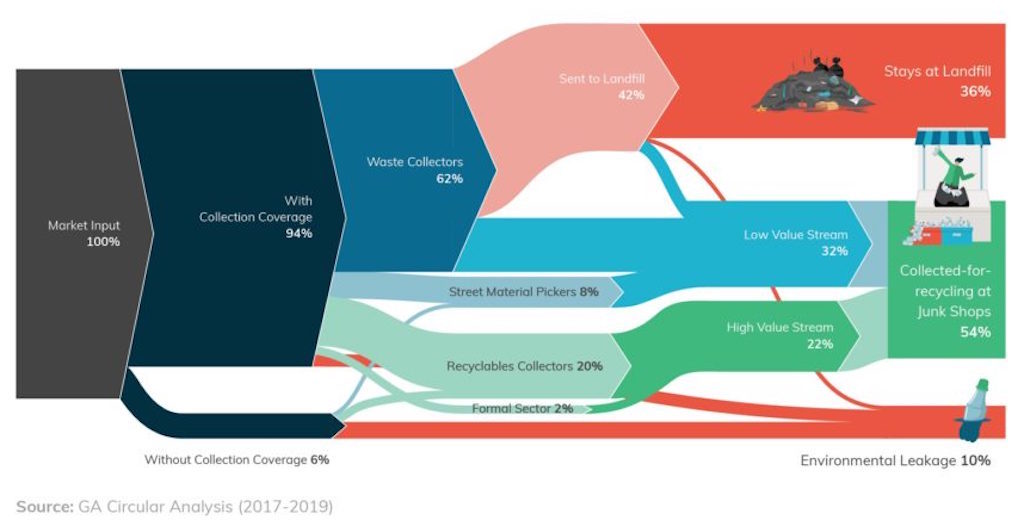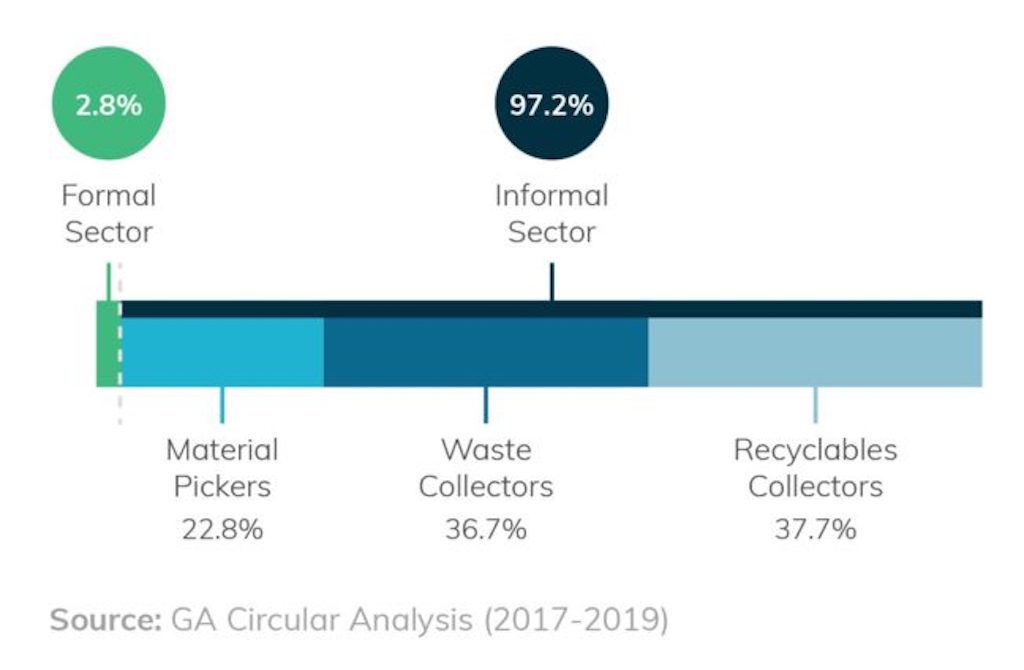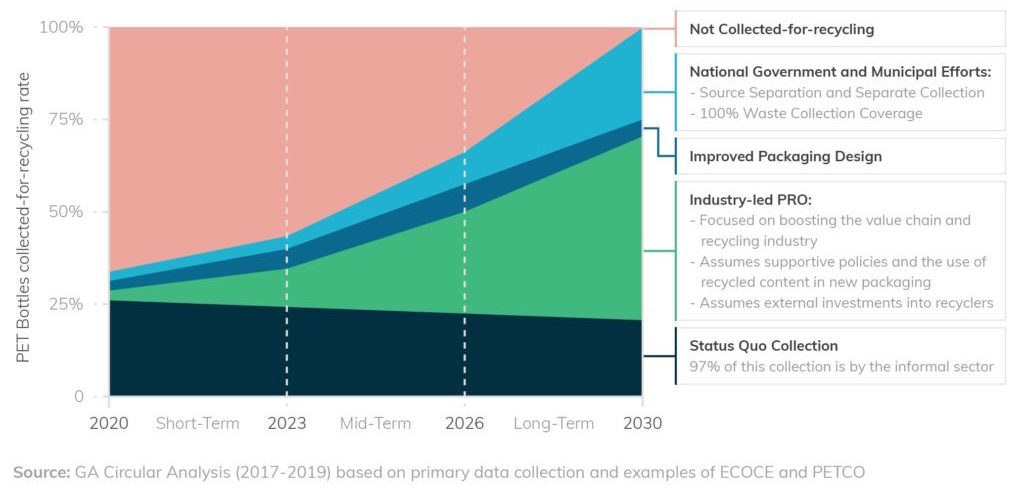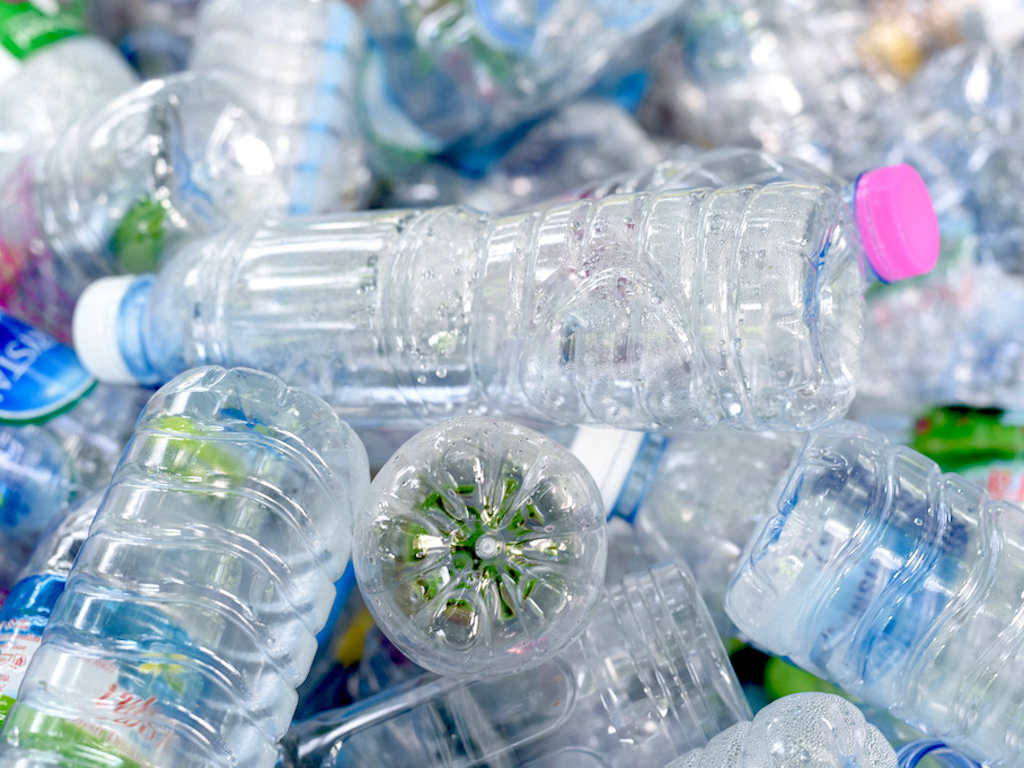4 Mins Read
A major report about plastic bottle recycling in the Southeast Asian region reveals the severity of the waste crisis facing countries that simply do not have the adequate infrastructure for collection with hundreds of millions of dollars worth of value being lost and consumers and businesses bearing the brunt of the collection responsibility.
Singaporean environmental consultancy GA Circular has just released its new report on PET bottle recycling in Southeast Asia. The report, titled “Full Circle”, which comprises of over 2 years of primary data in 6 countries – Indonesia, Vietnam, Thailand, Myanmar, Malaysia and the Philippines – marks the first systematic comparison of PET bottle collection and recycling systems in the region. It shines a light on the desperate need for governments, businesses and individuals to collectively amp up efforts to create a circular economy for post-consumer PET bottles – which is currently a staggering source of mismanaged waste in the region.
After an in-depth dig through the complete report– fun nightly reading for some- here’s an overview of the major takeaways:
1) Only 54% of PET bottles are collected for recycling in Southeast Asian cities

On average at the city level across all 6 countries studied, only 54% of all PET plastic bottles reach the collection stage of the recycling process. What happens to the rest? 36% goes to landfills, and 10% leaks into the environment.
These numbers are even worse if we zoom out to the country level. The estimated collected-for-recycling rate across the 5 countries studied stands at a mere 26%, while another 26% is destined for landfills and the remaining 48% leaking into the environment.
2) Uncollected PET bottles amounts to an annual loss of US$199 million
Across the 6 regional countries, those 660,000 tonnes of PET bottles that end up in a landfill or contribute towards environmental leakage represent an annual loss in secondary material value of US$199 million.
3) The informal sector accounts for 97% of all PET bottles collected for recycling

Out of the 9 cities surveyed across all 6 countries, the informal sector is the backbone of collection. This means that individuals and civil society are currently bearing the brunt of the work, and are doing so because formal collection methods and government recycling infrastructures are sorely lacking.
4) Price, packaging design, short-term collection system to blame for low recycling rates
The report identifies 6 main reasons to explain the low PET collection rates across the region. These include:
- price of post-consumer materials, which is insufficient to incentivise informal sector collection,
- lack of value creation in the market for these items,
- poor current packaging design that contributes to waste and hinders value creation,
- poor collection coverage and accessibility that promotes environmental leakage rather than proper disposal,
- lack of source separation, and
- existing collection systems being short-term rather than permanent.
5) Collection rates for PET recycling is projected to decline
Asia-Pacific is projected to become the fastest growth market for PET bottles, with consumption of PET expected to double between 2018 and 2030 in all 6 countries. However, given these massive shortcomings and the existing systems’ reliance on the informal sector for recycling collection and segregation, the collection-for-recycling rates for PET bottles is expected to decline in the future. The doubling of the market input cannot be handled by the informal sector alone.
So what needs to happen to solve the PET crisis?

Analysts at GA Circular make several recommendations in the report. Firstly, they call on the industry to adopt Packaging Recovery Organisations (PROs) that will create value, and boost prices for post-consumer PET bottles and other packaging materials. In Vietnam, PRO has already been established since June 2019. Other governments need to follow in line and support widespread industry adoption through implementing enabling policies and standards for a circular economy, such as recycling targets, and providing accessible source separation and collection infrastructure for the majority of informal sector to take part.
Secondly, companies also need to join in the fight – and fortunately, some are. Multinational beverage giant Coca-Cola, for instance, just announced a switch from green to clear PET bottles in Southeast Asia, as clear ones are valued higher than the coloured kinds. Coca-cola has also mentioned that they will work with their industry peers in Asia-Pacific to establish a PRO.
Want to know more about global issues?
Do you want to learn more about the biggest issues facing our planet today – especially those Southeast Asia is most vulnerable to? We’ve provided easy-to-read summaries on multiple other landmark studies, from global plastic pollution to air quality. Here are some that you might be interested in:
- 8 Key Facts About Hong Kong Air Pollution From Health & Policy Experts
- 10 Takeaways From UN ESCAP’s Mid-Year Analysis On Asia SDG Progress
- The Global Plastic Pollution Crisis In 10 Numbers
- 7 Trends Will Drive Consumer Spending Habits In The Next Decade
- 8 Most Polluted Coastlines In Southeast Asia
- 5 Foods Could Disappear Due To Climate Change
Lead image courtesy of Adobe Stock Photos / Plastic Today.




